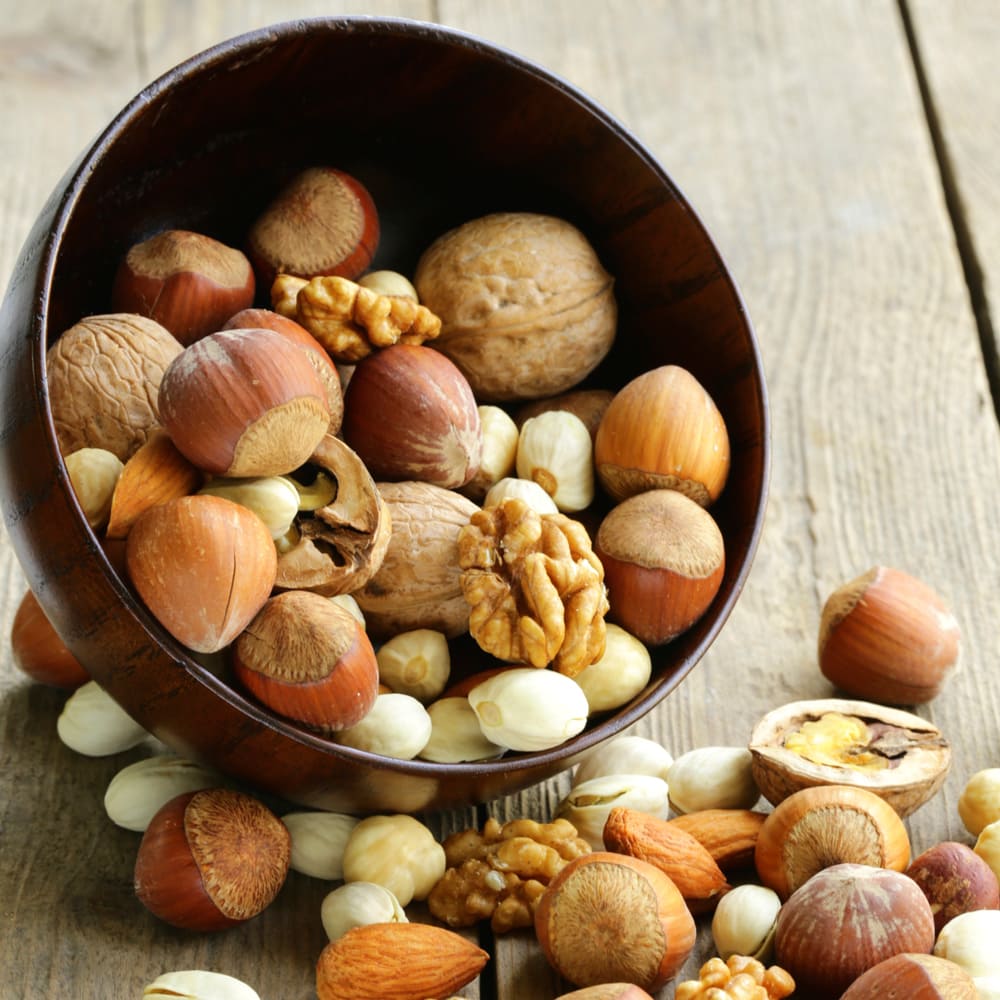
Nuts are one of those foods that probably deserve the title of everyday superfood.
I like this concept: foods which are commonly eaten and easily available, that also just happen to be super good for us. It doesn’t have to come from the Amazon or the Himalayas to be super, some of the humblest foods qualify. Think oats, broccoli, eggs, berries, salmon. These are all everyday foods that punch above their weight, nutritionally speaking.
Nuts have been described as nature’s vitamin pill; I know I’d rather eat a nut than a capsule. While different nuts contain varying nutrients, in general it’s their combination of healthy fats, plant-based omega-3 (ALA), fibre, vitamin E and other antioxidants that makes them so beneficial. Nut consumption has been associated with good cholesterol control and reduced risk of heart disease and diabetes. Studies also point to regular nut eaters having the same or lower body weights than people who don’t eat nuts.
Among the stars, almonds are high in vitamin E, walnuts are high in ALA, and Brazil nuts are high in selenium. New Zealand soils are low in selenium compared to many countries but one or two Brazil nuts each day will improve our intake of the antioxidant selenium just as effectively, and for about half the price, of a supplement.
Just because nuts are super, though, doesn’t mean we should go crazy on them. As with anything, keeping an eye on the big picture and getting a good variety of food – a little of everything, not too much of anything – is a good approach.
Nuts are a prominent feature of some popular eating patterns at the moment. They feature heavily in raw, vegan and ‘wholefood’ baking. While nuts are a great addition to baking and can prove a useful substitute in some gluten-free recipes, it can pay to keep an eye on the volume of nuts it’s possible to eat when they’re used this way. I’ve seen raw food ‘cakes’ featuring cups of ground nuts; when you combine these with other typical ingredients such as coconut, dates, honey and coconut oil, the overall energy density can creep right up. It’s possible to eat far more kilojoules or calories from a so-called ‘healthy’ cheesecake than you’d ever get from a regular dairy-based one.
Another thing that can trip us up with nut-heavy recipes are FODMAPs. These are types of carbohydrates that some people have trouble digesting; in susceptible individuals they can trigger symptoms of IBS. While many nuts are fine on a low-FODMAP diet, there are some which contain galacto-oligosaccharides; these are not ideal for IBS sufferers. Almonds, cashews and pistachios are best limited if this is you.
The good news is that for most of us nuts make an excellent snack. A small handful a day is perfect. Roughly chop and add to fruit and yoghurt for breakfast or dessert; keep a container of mixed nuts at work for a regular snack; add walnuts, dry-roasted slivered almonds or other nuts to salads. Always choose unsalted nuts and when dry roasting, only prepare as much as you want to use straight away.
It’s National Nut Day on October 22nd; a good time to think about incorporating some nuts into your diet, if you don’t already. Read more about the nutritional benefits of different types of nuts here. And click here for recipes with nuts, from the Healthy Food Guide website.
www.healthyfood.com










